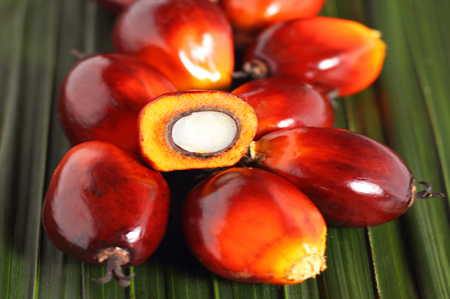 (Agrimoney) – Palm oil output in Malaysia made an even weaker start to 2016 than expected, fuelling expectations of a drop in output this year – and potentially of prices gaining an, unusual, premium to those of rival soyoil.
(Agrimoney) – Palm oil output in Malaysia made an even weaker start to 2016 than expected, fuelling expectations of a drop in output this year – and potentially of prices gaining an, unusual, premium to those of rival soyoil.
Malaysia’s palm oil production fell by 19.3%, month on month, in January, to 1.13m tonnes, the Malaysian Palm Oil Board said.
While a seasonal decline in output is expected -with Malaysian production typically bottoming out in March before recovering to a peak around September-October – the figure for last month was well below expectations of 1.20m tonnes.
Indeed, it came in below the lowest estimate from analysts surveyed by Reuters.
The number also represented the smallest January output figure in five years for Malaysia, which is the second-ranked producing country, after Indonesia.
‘Flat production at best’
The report underlined expectations that Malaysia’s palm oil output may decline this year, with the UK’s AHDB bureau saying the data “support concerns that have been building about how much palm oil output could decline in 2016”.
At London broker VSA Capital, Ed Hugo said: “The data adds credibility to the view that production in region Asia will be flat year on year at best.”
Analysis group LMC International, in its Oils Price View report published on Wednesday, said that Malaysia’s “palm oil production prospects are bleak – at best a year of no growth”.
And, with demand prospects lifted by an increased mandate for biodiesel, which is made from vegetable oils, in Indonesia “we believe [Malaysian] stocks will continue to fall rapidly” LMC said.
In January, the MPOB data showed inventories dropped by 12.4% from December to a six-month low of 2.31m tones, some 80,000 tonnes below market expectations.
Palm oil vs soyoil
Palm oil futures closed 0.5% lower at 2,567 ringgit a tonne in Kuala Lumpur despite the lower-than-expected stocks data, in a drop attributed to separate data from cargo surveyors showing a weak start to February for Malaysian exports, and to profit-taking.
Futures remain near the 20-month high of 2,604 ringgit a tonne set on Monday.
However, the data fuelled expectations of support for palm oil prices ahead.
Mr Hugo – who had forecast a higher average values for 2016 of $650 a tonne in Rotterdam, a price which has already nearly been attained by the recent market rally – forecast that palm oil could, unusually, become more expensive than soyoil.
“We could see palm oil at a premium to soyoil, although that may reverse fairly quickly,” he told Agrimoney.com.
The relationship between prices of the rival vegetable oils will also depend in part on availability of supplies in Argentina, the top soyoil exporter, where farmers have not been releasing soybeans as quickly as many investors expected.
Energy markets factor
Energy markets will also have an effect, Mr Hugo added, with weak oil prices pushing margins at biodiesel plants into the “trouble zone”, and potentially testing the willingness of Indonesia’s government to subsidise significantly its biofuels industries.
LMC, forecasting that the spread between Rotterdam palm oil to Brent crude “will go above $400 [a-tonne] by June”, also saw palm oil outperforming vegetable oil peers.
“Other [vegetable] oils will not rise as much,” the group said
Nonetheless, LMC downplayed expectations of palm taking a premium, saying the prices of rival oils “will remain above palm oil unless the El Niño drought returns with a vengeance.
“In that event, crude palm oil will soar and the other oils will have to take markets from crude palm on the basis of price. “




